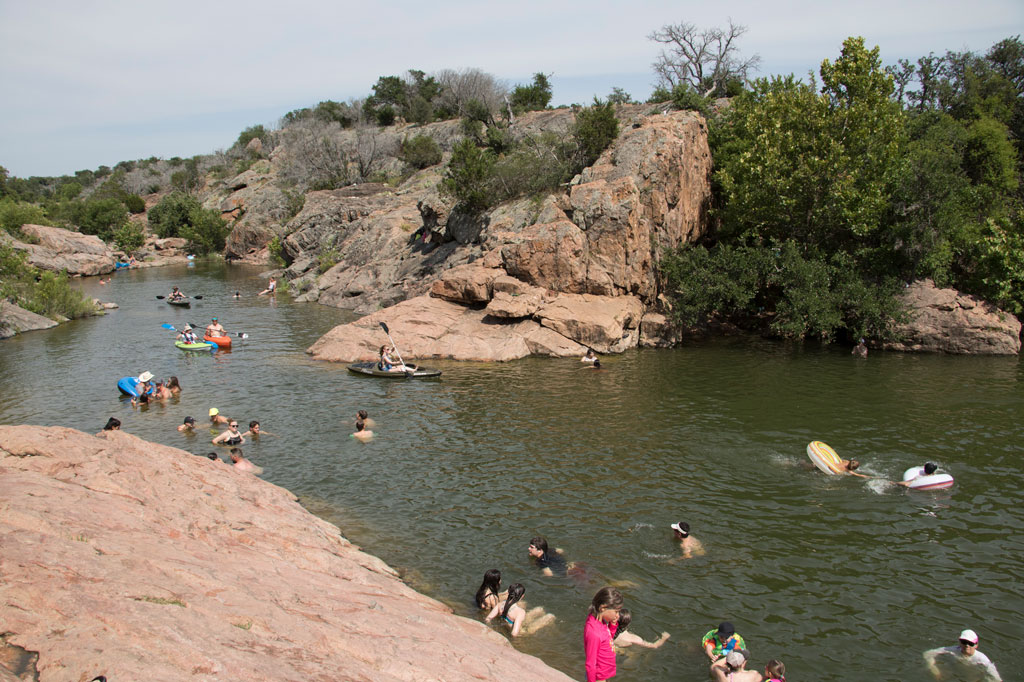Inks Lake State Park marks 75 years

Devil’s Waterhole is an iconic spot at Inks Lake State Park, which is celebrating its 75th anniversary on Oct. 18, 2025. File photo
Inks Lake State Park hosts its 75th birthday celebration Saturday, Oct. 18. The fun-filled event is 10 a.m.-2 p.m. at the park, 3480 Park Road 4 West in Burnet.
Visitors can take aim during instructer-led archery and atlatl-throwing programs, drop a line in a pond stocked with over 200 catfish, tour historic campsites, and head out on a selfie scavenger hunt.
Also, game wardens will answer hunting and fishing questions, and overnighters can decorate their campsites for contest prizes. See a full list of activities at the link.
The event is included with park admission, which is $7 for ages 13 and older and free for children 12 and younger. No preregistration or reservations are required.
PARK HISTORY
Inks Lake State Park officially opened in 1950, and has been a popular Texas outdoors destination ever since. However, Inks Lake and the surrounding area have drawn people for over 8,000 years, beginning with the prehistoric peoples who lived along the Colorado River. The area was later populated by Apache and Comanche tribes.
In 1934, the Lower Colorado River Authority was created to manage the river and build a chain of reservoirs, which resulted in the Highland Lakes. Construction of Inks Dam, the structure that would form Inks Lake, began in 1936 and was completed in 1938. Inks became the Highland Lakes chain’s second lake, situated between Buchanan Dam to the north and Inks Dam to the south.
The Highland Lakes reservoirs were developed during the Great Depression, when economic relief programs such as President Franklin D. Roosevelt’s Civilian Conservation Corps were in full swing. Launched in 1933, the CCC provided jobs, housing, and food for unemployed young men, many of whom sent most of their modest monthly earnings of $30—equivalent to slightly more than $700 today—home to their families.
Around the time Inks Dam was being constructed, CCC crews were also working on nearby Longhorn Cavern State Park, which was finished in 1940 and still has many of the CCC buildings on site. In the late 1930s, CCC labor shifted to building infrastructure for what would become Inks Lake State Park, including scenic roadways, stone bridges, culverts, and early park facilities.
However, with the approach of World War II, CCC operations were shut down and the Inks Lake CCC camp was closed in 1942 before the park could be finished. Today, remnants of the camp are still visible.
The Texas State Parks Board acquired the land, roughly 1,200 acres, in 1940 and later oversaw the completion of the park.
Inks Lake State Park has continued to grow and evolve over the decades. Its most recent improvements came in 2024 with the opening of a new headquarters building, upgraded restroom facilities, and expanded parking to accommodate increasing visitor demand.


